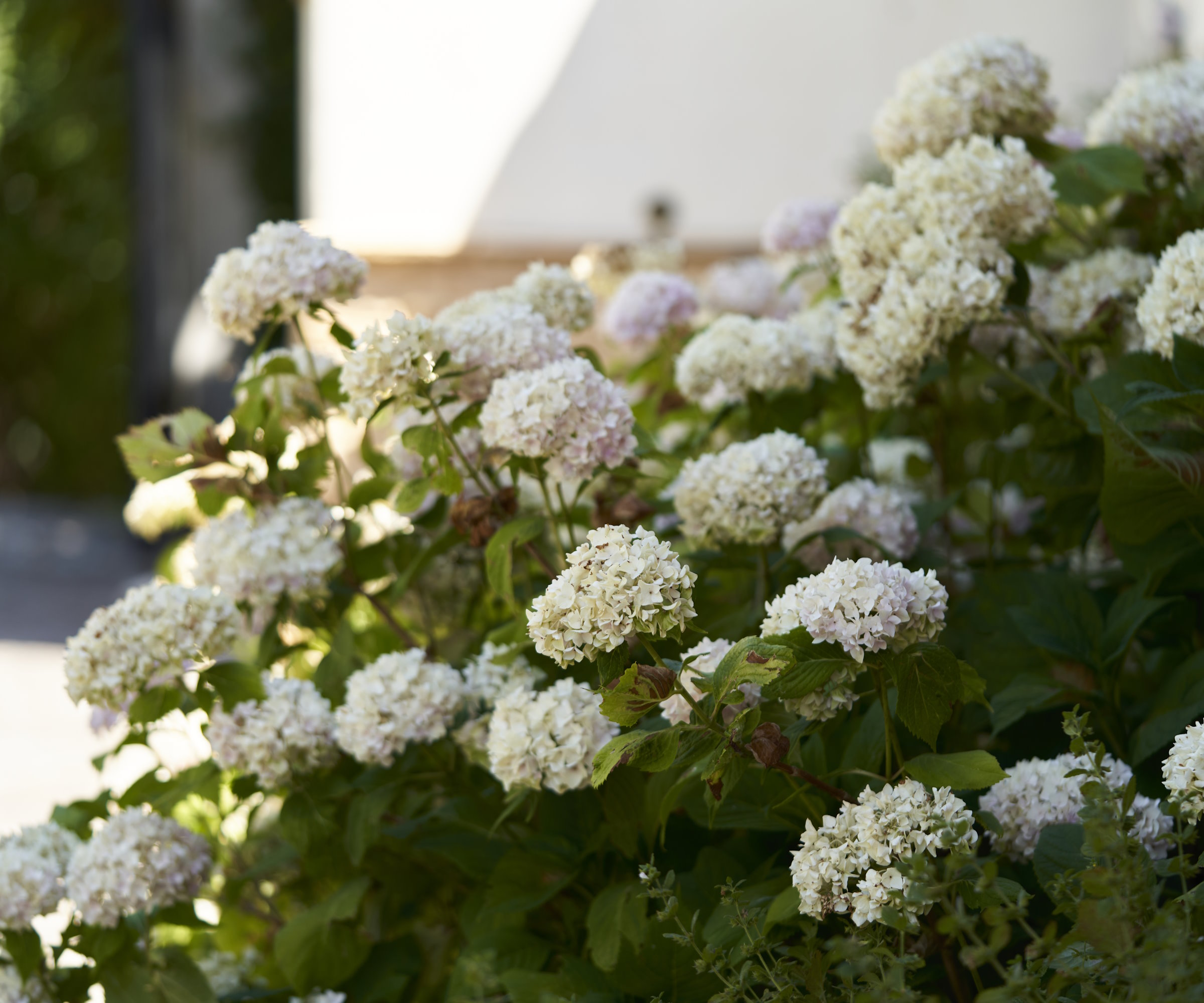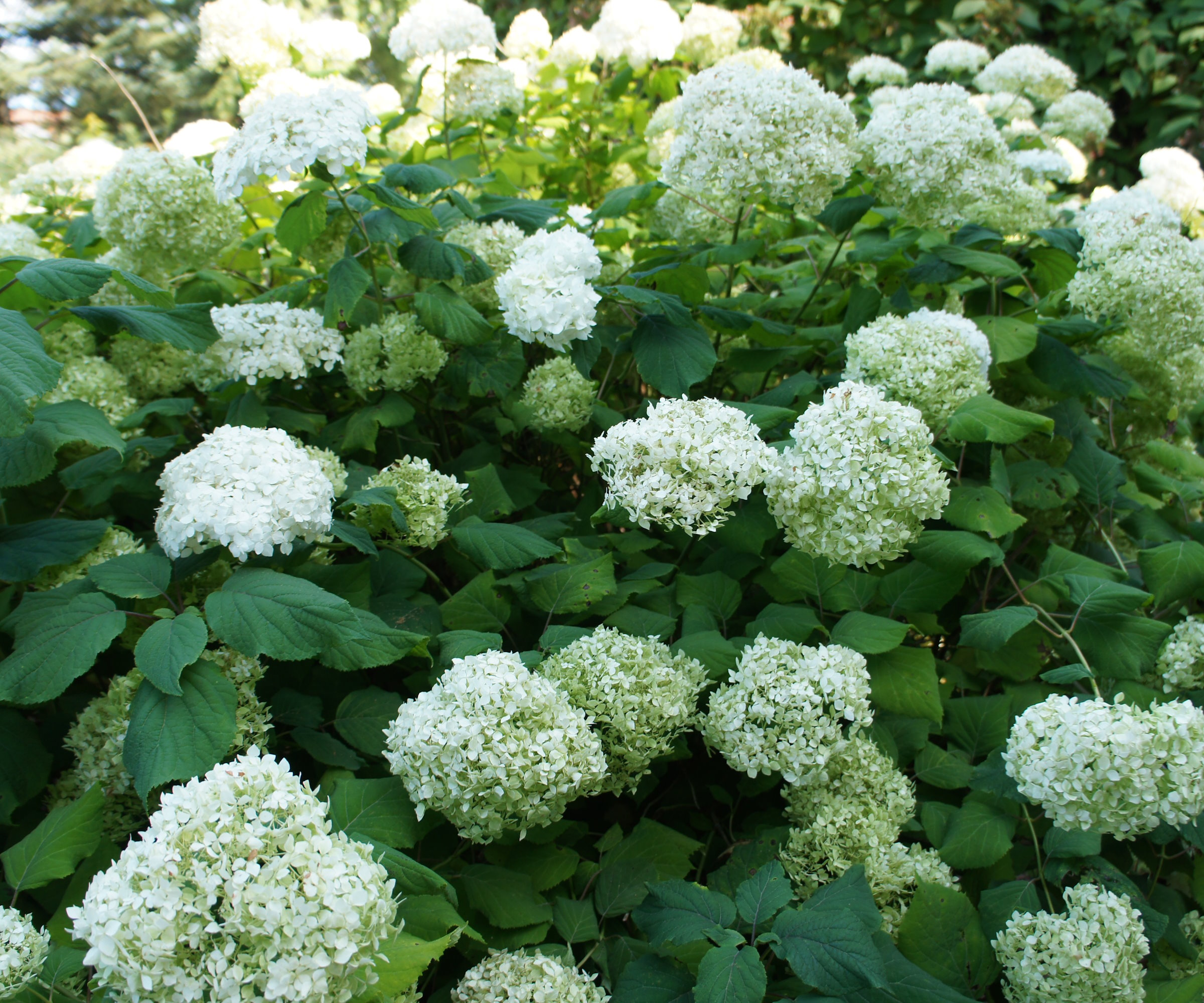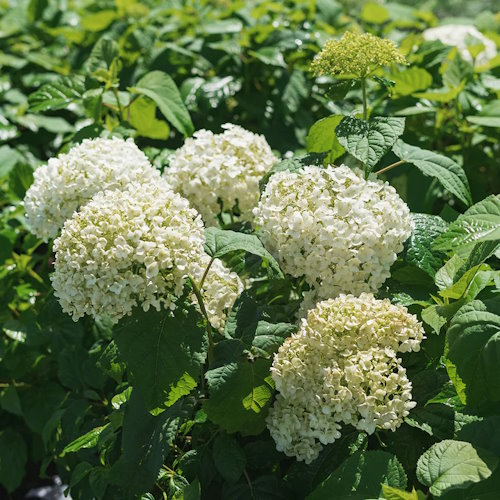When and how to plant Annabelle hydrangeas – 7 steps for success with this desirable shrub
Experts reveal the best time of year to plant Annabelle hydrangeas, along with tips on how to do it


Annabelle hydrangeas are hugely popular flowering shrubs that tick many boxes. They are gorgeous, reliable, and need little maintenance each year. If that all sounds good to you, then you may want to know how to plant an Annabelle hydrangea in your backyard.
Also known as the smooth hydrangea, Hydrangea arborescens 'Annabelle' is much-adored for the large round flower heads they produce every summer. Reaching up to 12 inches in diameter, these fantastic white blooms look stunning and can brighten up any space.
If you are inexperienced when it comes to growing hydrangeas, then picking the right spot and planting the shrub at the correct time are both going to be hugely important in ensuring they thrive.
We hear from the experts on the best time to plant Annabelle hydrangeas and get seven key steps to follow when planting the shrubs.

Annabelle hydrangeas are popular for their white blooms
The right spot for growing Annabelle hydrangeas
Annabelle hydrangeas are woodland plants that prefer to grow in part shade rather than full sun. Shade is especially important when planting and growing them in hotter regions, as they struggle with too much exposure to direct sunlight.
Ahead of planting your Annabelle hydrangea, choose a spot in your backyard that offers dappled or part shade. Remember that the more sun the shrub will get, the more moisture it is going to need to keep it happy.

Annabelle hydrangeas want a shaded spot in hotter climates
When to plant Annabelle hydrangeas
It is popular to plant hydrangeas either in the milder weather of spring or fall. These are times when the weather is cooler and the ground is easily workable. Planting at this time makes it easier to plant the shrubs and the conditions are right for them to start to establish themselves quickly.
Design expertise in your inbox – from inspiring decorating ideas and beautiful celebrity homes to practical gardening advice and shopping round-ups.
Lorraine Ballato, author and hydrangea expert, recommends that ‘fall is the best time to plant Annabelle and many other hydrangeas’. She says: ‘The soil is warm which will help the roots get established. Rainfall is more plentiful and the scorching summer sun has abated, which will prevent heat stress on the plant.
‘This plant flowers on new wood, so it is important to get it in the ground and well established before the late spring when it begins to form its flowers. Alternatively, you could plant Annabelle in spring when the ground has defrosted but it will take the plant longer to get established at that time of year.’
Tammy Sons from TN Nursery agrees on the best time to plant Annabelle hydrangeas as, in her experience, the shrubs really do benefit from going in the ground during the fall.
She adds: ‘Hydrangeas suffer more shock than most hardwoods and it's very stressful on fragile softwood shrubs to plant and then have to perform by growing and blooming so soon in spring after planting them. We have had very high success on fall planting.’
When it comes to planting hydrangeas in spring, always wait until after the last frost for your US hardiness zone. Though do not leave it too late, as the plant needs as much time as possible to establish a strong root system before the heat of summer arrives. Hydrangeas can be drought tolerant shrubs, but only once they are well established after at least a year in the ground.

Tammy Sons is the owner of Tennessee Wholesale Nursery, a third-generation family business based in Tennessee that grows an extensive selection of trees, shrubs, flowers, and other plants.

Annabelle hydrangeas are best planted in fall
How to plant Annabelle hydrangeas
Hydrangeas love a rich soil type, with lots of organic matter, that drains well. It is recommended to conduct a soil test before planting to understand the pH and nutrient make-up of the site.
It is also advisable to check the drainage, by simply digging a hole and filling it with water to see how quickly the water drains away. The addition of compost or well-rotted manure can both improve the moisture retention and nutrient levels of the site.
Lorraine Ballato offers seven key points to follow to help you plant Annabelle hydrangeas correctly and ensure your shrubs grow strong and healthy:
- Dig the hole no deeper than the depth of the plant in the container, or the depth of its previous location if you are transplanting hydrangeas. This is important as being planted too deep can cause hydrangeas to not bloom.
- The receiving hole should be a bit wider than the container/previous location so the plant’s roots can literally reach out into the surrounding soil.
- Do not add peat moss or other amendments at planting time. That’s a change from some age-old practices. Science has shown that when we add amendments at planting time, the plant grows fine for a year or two. But when it reaches the native soil, it goes into decline as that soil composition is usually significantly different than amended backfill.
- Settle the plant in the hole halfway down, then water it gently. Let the water filter down. This will help remove unnecessary air pockets in the backfill. Then put the rest of the soil into the hole and water it again.
- Use soil to create a ‘collar’ around the base of the plant a few inches out. When you irrigate the plant, this collar will allow water to puddle at the base and percolate slowly down to the roots. The collar prevents the water from running off.
- Watch the plant closely and plan on watering the plant every few days if not sooner.
- Top off your masterpiece with mulch to help retain moisture and keep the plant weed free. About two inches of organic mulch like shredded leaves or bark work just fine.
As well as keeping a regular eye on watering, feeding your Annabelle hydrangea with a balanced slow release fertilizer in spring and early summer going forward can be highly beneficial in promoting lots of healthy growth and an abundance of stunning blooms. An example of a good feed to use is the 360 Day Slow Release Fertilizer, available at Perfect Plants.

Lorraine Ballato is a hydrangea expert and the the author of the international best selling book 'Success with Hydrangeas', available at Amazon. She is also an in-demand speaker throughout the US and the resident hydrangea expert at the New York Botanical Garden.
FAQs
Does hydrangea Annabelle need ericaceous soil?
Annabelle hydrangeas do prefer soil that is slightly acidic to neutral, with a pH level of 6.0-7.5. A soil test to determine the pH of the soil can be beneficial to help create the best conditions for the shrub.
The pH will not have an impact on the color of the flower with Annabelle hydrangeas, such as it does with some other hydrangea types.
Do Annabelle hydrangeas grow well in pots?
Annabelle is a hydrangea variety that can successfully be planted and grown in pots. Autumn Hilliard-Knapp, horticulturist at Perfect Plants Nursery, explains a few essentials that you need to know for growing hydrangeas in pots.
She says: ‘While Annabelle hydrangeas can be planted in pots, it's essential to choose a large container with good drainage holes to allow excess water to escape. Regular watering and monitoring of soil moisture levels are necessary when growing them in pots, but they can definitely thrive if planted in a pot.’
You will need to water hydrangeas more when growing them in pots, especially during the summer months, and a good trick for watering plants in containers is to use your fingers to check the moisture levels a few inches under the surface. This helps ensure you do not overwater plants by adding more water to soil that is already sufficiently moist deep down.

Autumn is a horticulture specialist and marketing professional at Perfect Plants Nursery. With four years of experience in the horticulture industry, she has developed a passion for helping people create beautiful indoor and outdoor spaces to enjoy. Her expertise in horticulture encompasses a broad range of activities, including plant care and selection, landscape design, and maintenance.
Should you cut back Annabelle hydrangeas?
When it comes to pruning Annabelle hydrangeas, the best time to do this task is in late winter or early spring, cutting them just as the buds start to swell. Pruning the shrubs annually will help them stay healthy, look neat and compact, and guarantee a fantastic show of blooms each year.
Hydrangeas are one of the best shrubs for shade you can choose. If you do have a shadier corner or section of your garden, then always pick shade plants that will be happy in those conditions. There is a large selection to choose from as part of your backyard ideas that are perfectly adapted to lower light levels and can bring beauty to these often trickier areas.

Drew has worked as a writer since 2008 and was also a professional gardener for many years. As a trained horticulturist, he worked in prestigious historic gardens, including Hanbury Hall and the world-famous Hidcote Manor Garden. He also spent time as a specialist kitchen gardener at Soho Farmhouse and Netherby Hall, where he grew vegetables, fruit, herbs, and cut flowers for restaurants. Drew has written for numerous print and online publications and is an allotment holder and garden blogger. He is shortlisted for the Digital Gardening Writer of the Year at the 2025 Garden Media Guild Awards.
